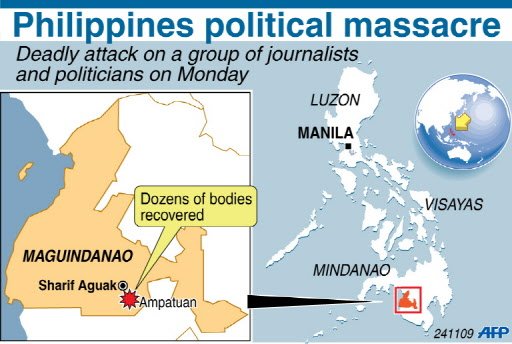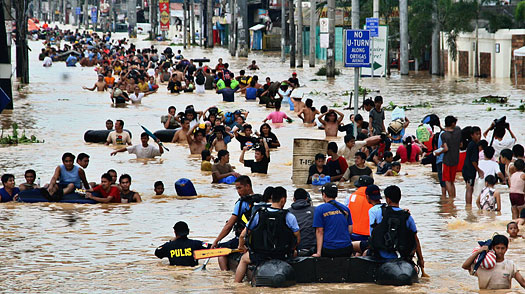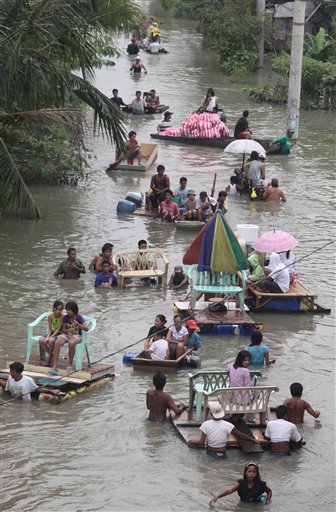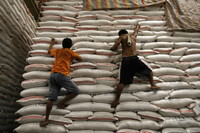– Arroyo’s spokesman defends martial law declaration (Xinhua)
– ‘Overkill, overreaction’—opposition solons (Inquirer):
MANILA, Philippines –(UPDATE)“Unconstitutional,” “overreaction,” and “overkill” were just some of the reactions by lawmakers at the House of Representatives over President Gloria Macapagal-Arroyo’s declaration of martial law in Maguindanao Saturday.
Opposition lawmakers said they would question before the plenary the basis of Proclamation 1959, which placed Maguindanao, except in areas occupied by the Moro Islamic Liberation Front, under martial law and suspended the writ of habeas corpus.
“Under the Constitution, President Gloria Macapagal-Arroyo may only declare martial law or suspend the writ of habeas corpus in case of invasion or rebellion. These conditions do not exist, ergo Proclamation 1959 is unconstitutional,” Bayan Muna partylist Representative Satur Ocampo said in a text message.
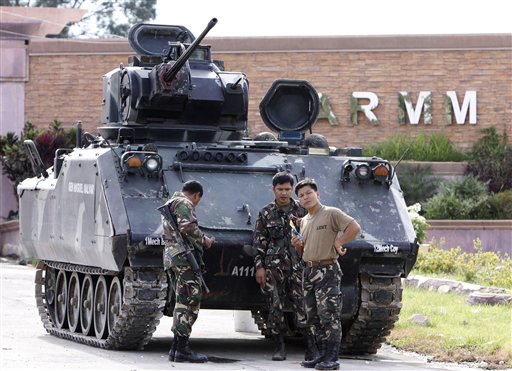
Soldiers take a break as they stand in front of their armored personnel carrier at the gate of the Autonomous Region of Muslim Mindanao Saturday, Dec. 5, 2009 in Shariff Aguak town in Maguindanao province in southern Philippines. Government soldiers took the patriarch of a powerful clan, a former governor, and three other members of his family into custody after President Gloria Macapagal Arroyo put the entire province under martial law to hunt down suspects in the country’s worst political violence. (AP Photo/Pat Roque)
SHARIFF AGUAK, Philippines — Philippine troops arrested 62 people and discovered another major weapons cache Sunday after martial law was imposed in a southern province following the country’s worst political massacre.
Thousands of troops, backed by tanks and warplanes, have taken control of Maguindanao province in a government crackdown on the powerful Ampatuan clan, accused in the Nov. 23 killing of 57 people traveling in a convoy of a political rival. The clan has denied involvement.
Late Friday, President Gloria Macapagal Arroyo imposed martial law in Maguindanao — the first use of martial law in the Philippines since late dictator Ferdinand Marcos imposed it nationwide more than 30 years ago. The move was announced on national television Saturday morning.
The government says it feared the Ampatuans, who have ruled unopposed with an iron fist over predominantly Muslim Maguindanao for years, were fomenting rebellion in response to the crackdown on them since the massacre.
Those arrested so far include the clan’s patriarch, at least six other family members, and clan followers, national police Chief Jesus Verzosa said.
Read morePhilippines: Military arrests dozens under martial law
